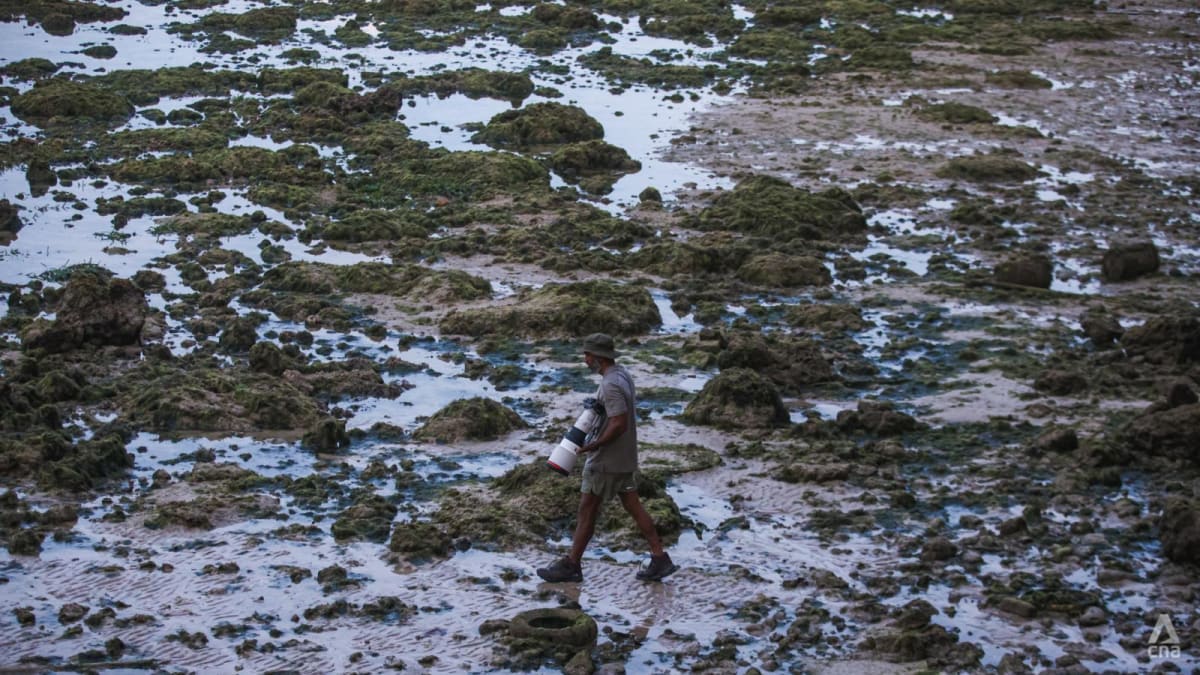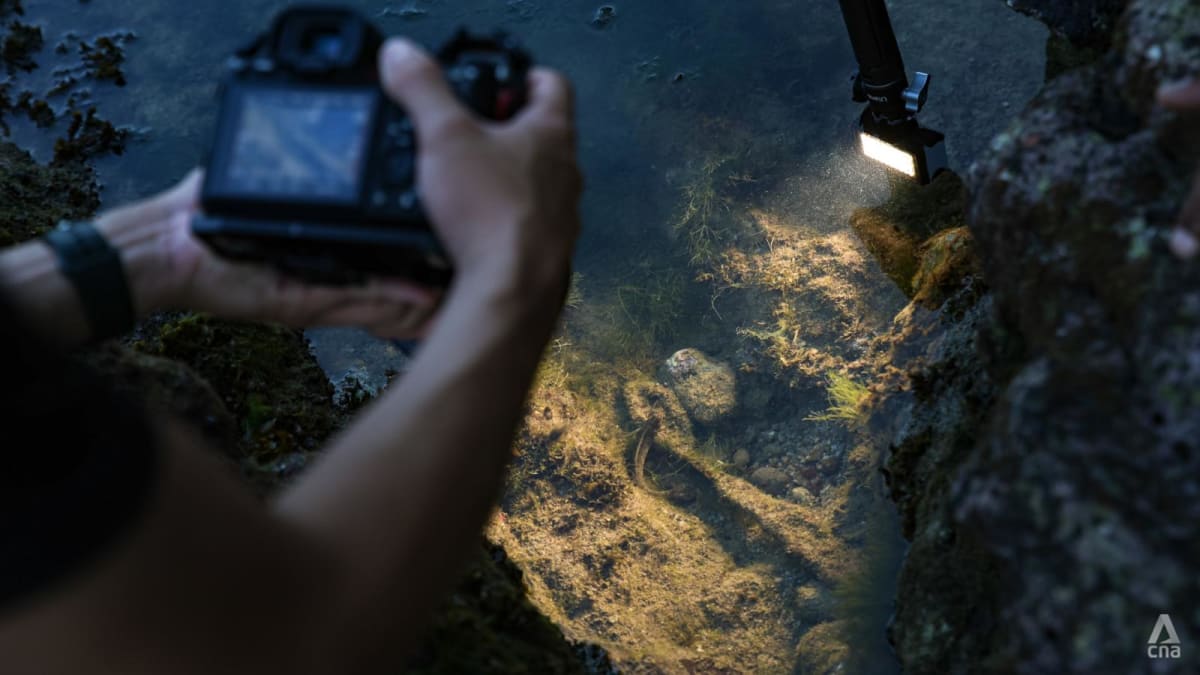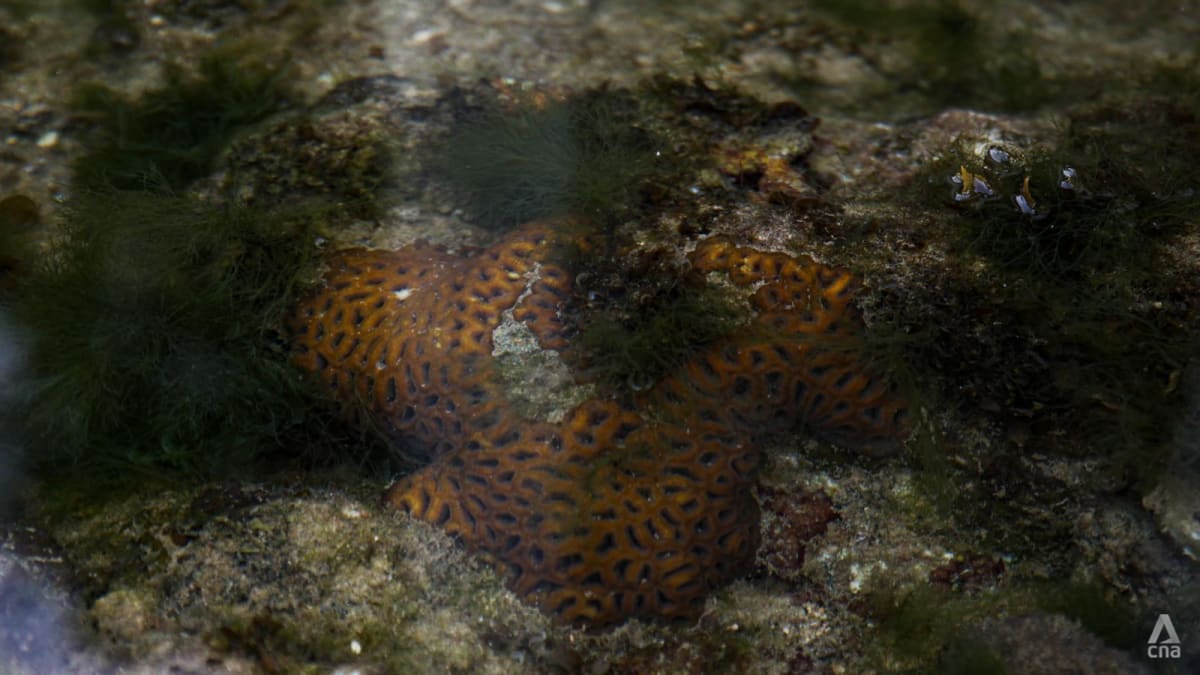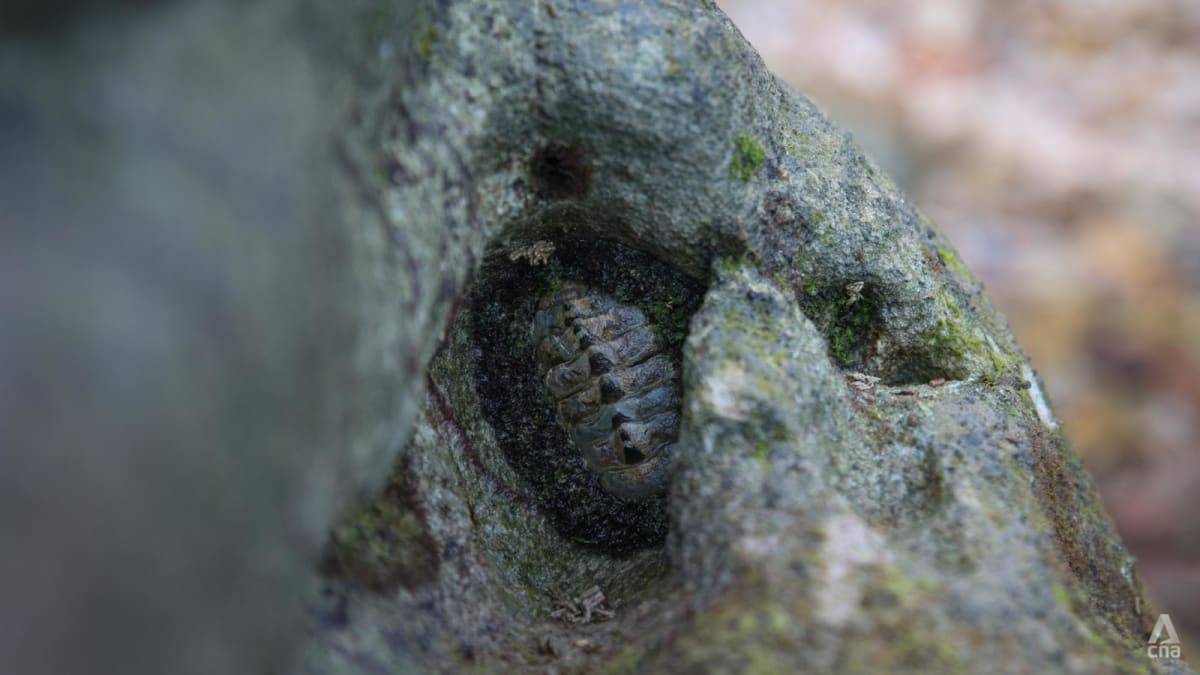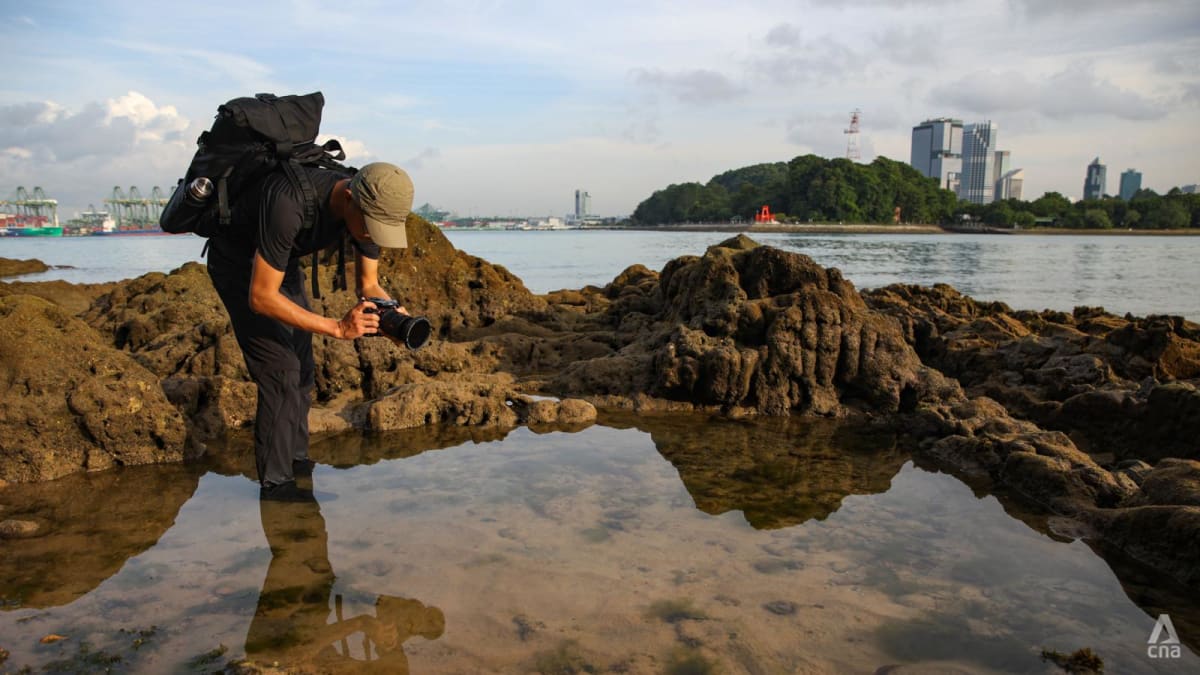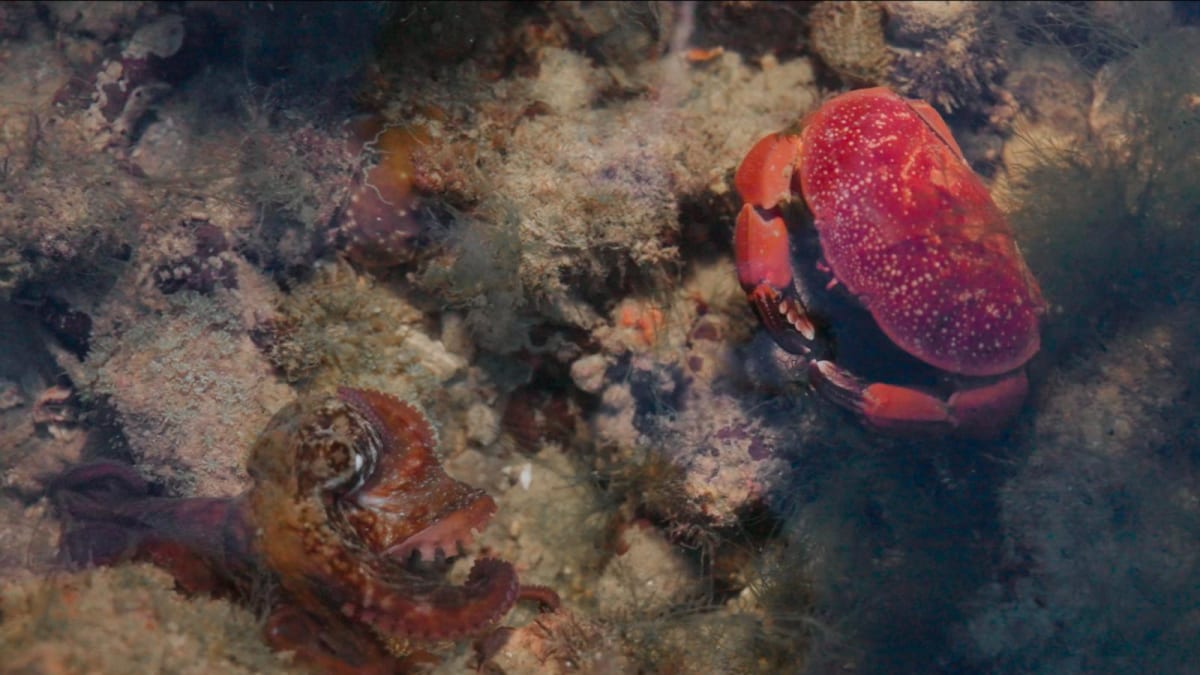In Pictures: Snakes and marine life you don’t always see at Sentosa
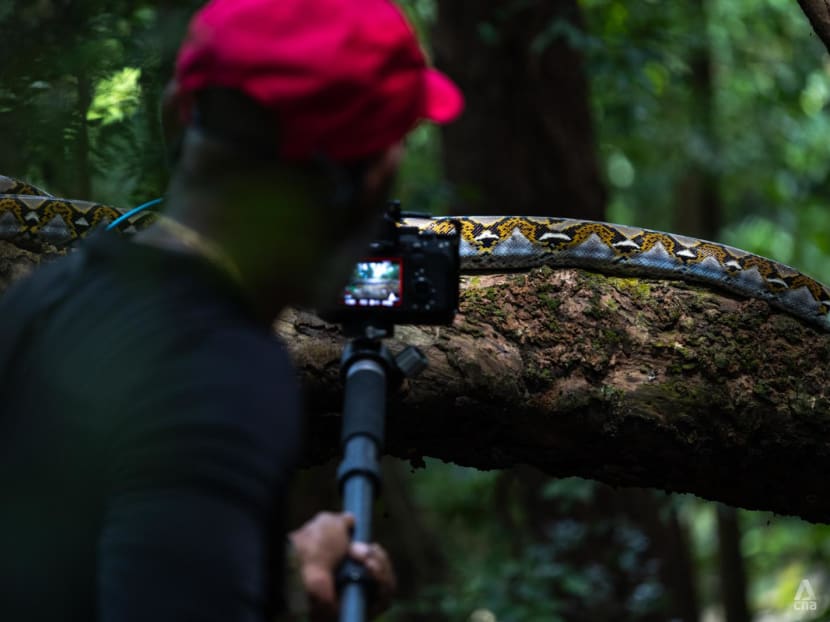
A 2-metre juvenile reticulated python slithering across a tree branch in front of filmmaker Jayaprakash Bojan. The snake was found near Palawan Green on Sentosa Island and was rehomed in a forested area nearby. (Photo: CNA/Raj Nadarajan)
There was palpable tension in the air as a black bag was taken to the forest.
Inside was a 2-metre juvenile reticulated python.
The snake with diamond-patterned skin was being relocated to a forested area on Sentosa Island by the wildlife management team of the Sentosa Development Corporation (SDC), after it was spotted in a high foot-traffic area.
Standing very still just a few metres away were two professional filmmakers and a photographer, patiently waiting for the snake to emerge.
They did not have to wait long.
In just a couple of minutes, the python slithered out of the bag and gradually made its way up a tree.
The team then waited another four hours for the snake to make its way down from the tree as they observed its movements on camera.
In Pictures takes you this weekend on a visual trip with wildlife filmmakers Jayaprakash “JP” Bojan and Ian Mun, as they document Sentosa’s biodiversity and conservation efforts for Earth in Focus, a nature film festival set to take place in November on the resort island south of mainland Singapore.
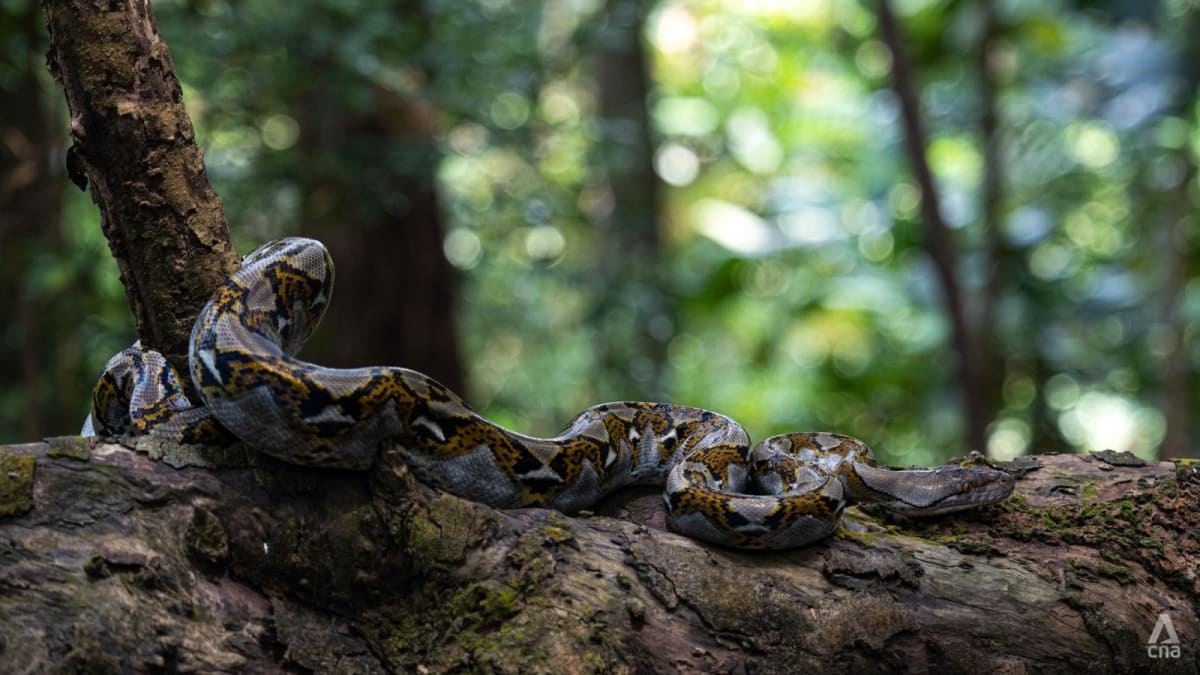
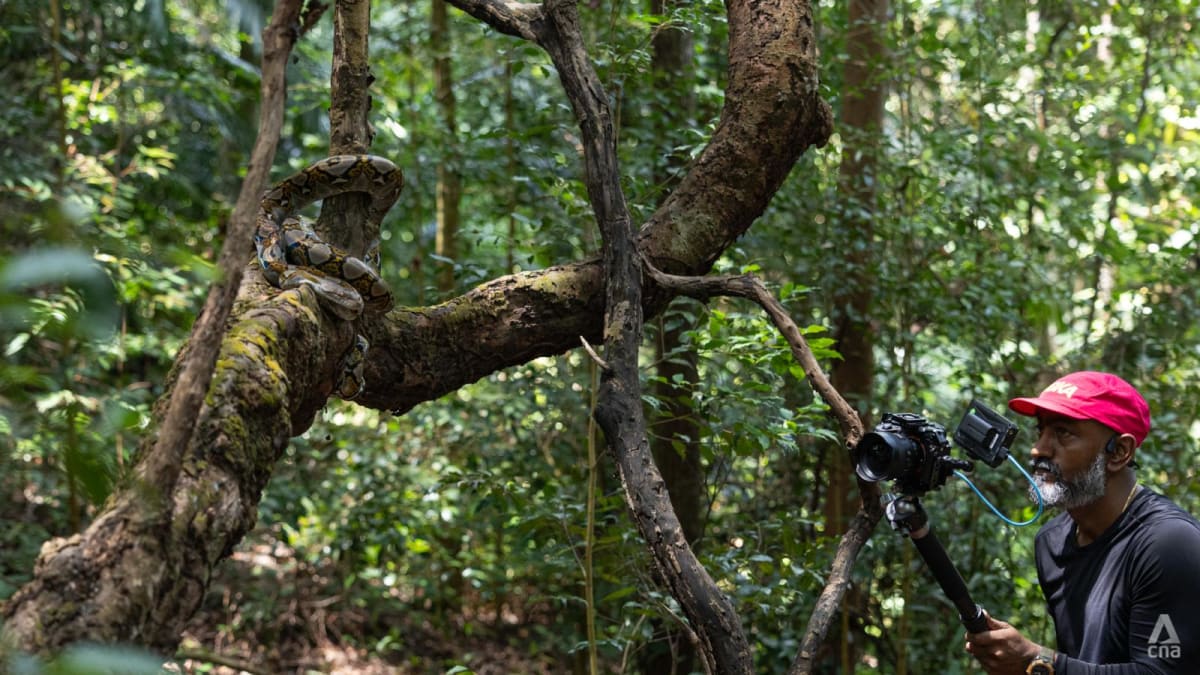
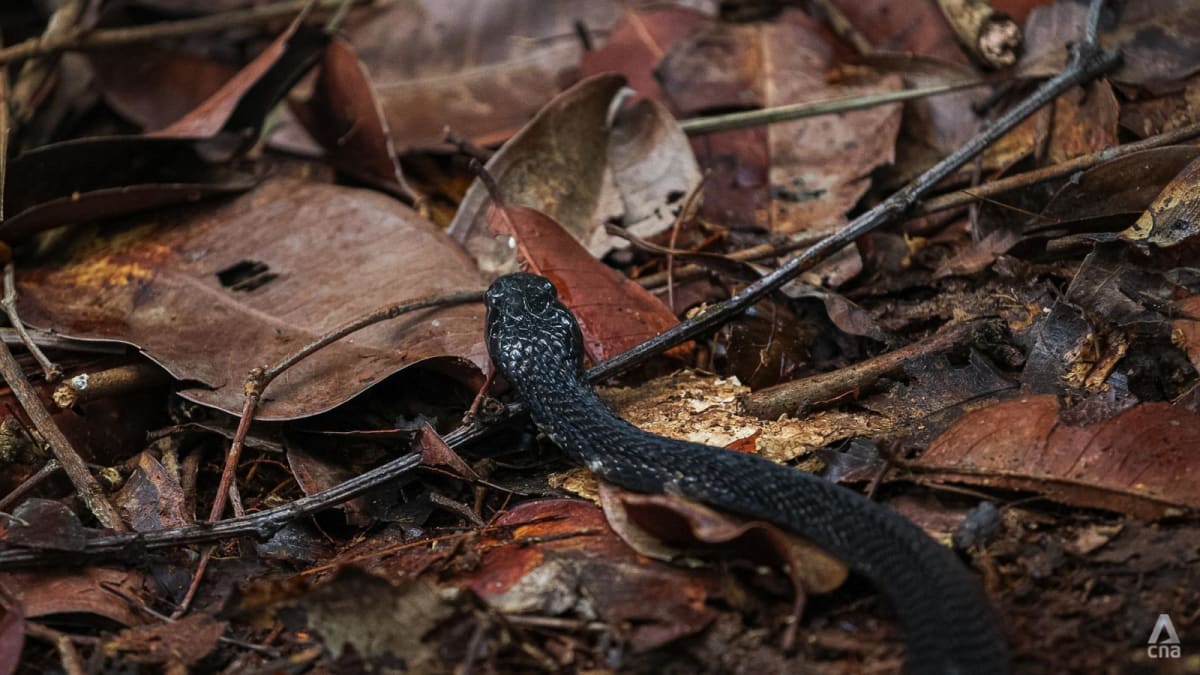
Sentosa is a tourist destination known for its themed parks and sandy beaches. The island’s free-roaming peacocks are probably its most well-known wildlife.
Off the beaten tracks, though, in the forested areas or along the rocky shores, there is a rich biodiversity of flora and fauna unknown to many visitors.
One rare species found in the coastal forests is the Xylocarpus rumphii, a critically endangered plant that has not been discovered elsewhere on mainland Singapore.
There is also the elusive lesser bamboo bat, one of the smallest mammals on earth.
This vulnerable bat species, which weighs just a few grams, has a flattened skull that allows it to squeeze in a hollow bamboo shoot to roost, through narrow slits created by beetles.
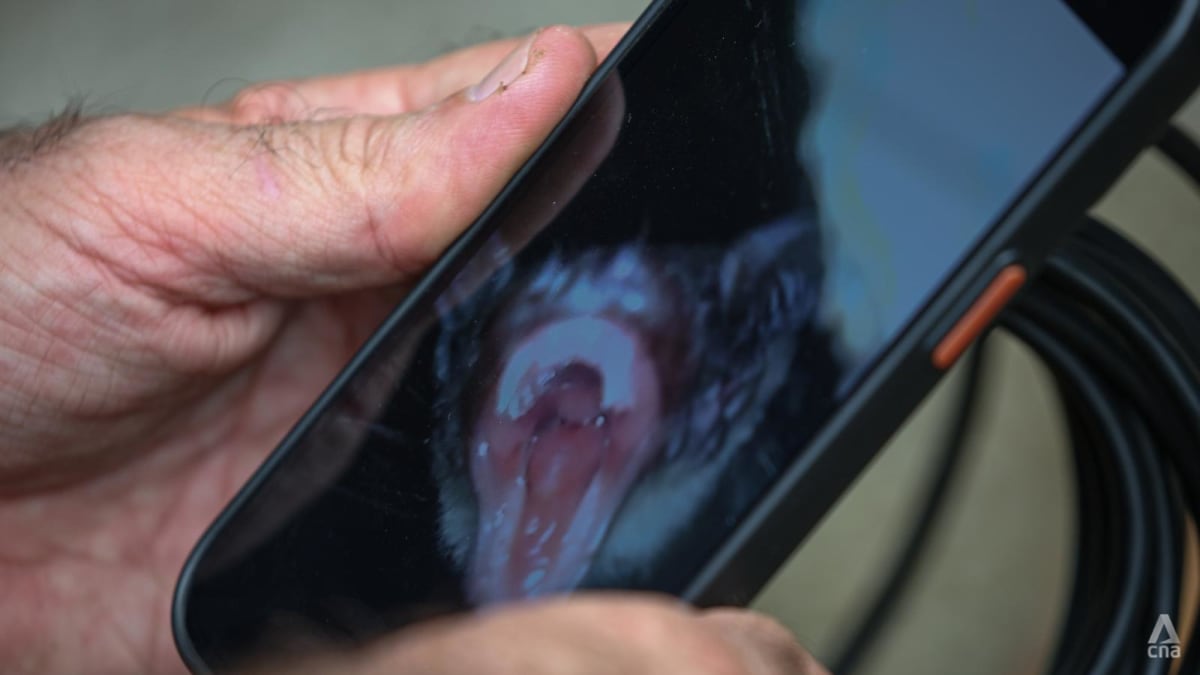
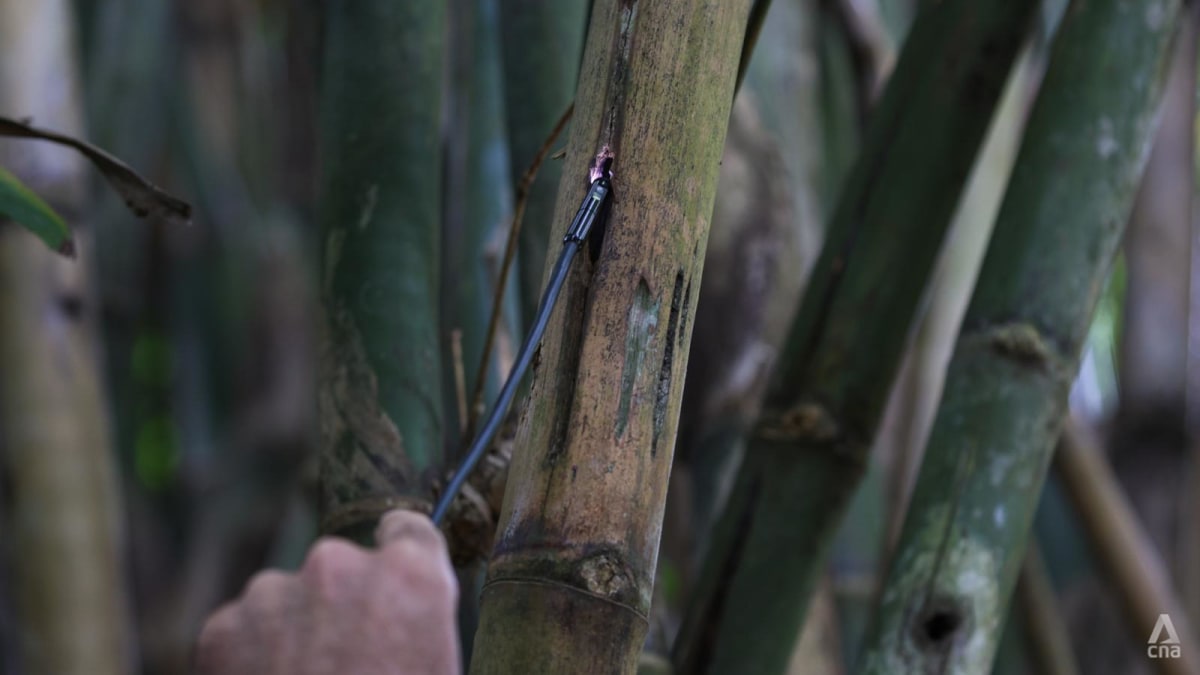
Sentosa is home to 850 flora and fauna species.
Setting up camera traps is one way that the conservation team is able to track and protect the wildlife on the island.
Unlike what it sounds, camera traps do not trap animals. They are cameras with sensors put up in animal habitats for a duration to record images of wildlife and collect data on them.
The team has deployed eight such cameras in biodiversity-sensitive habitats around the island and the cameras are checked every alternate month.
SDC said: “We urge guests to be mindful as they explore Sentosa and to treat our fragile ecosystems with care.”
Visits to some areas such as Tanjong Rimau and Mount Serapong are available only through guided tours by SDC or SDC-approved tours.
Tanjong Rimau, also known as Siloso Headland, is located at the western-most tip of Sentosa and is one of Singapore's last remaining coastal cliffs and rocky shores that are habitats for marine life.
Mount Serapong, located around the north-eastern part of the island, has a mature tropical rainforest and also a coastal forest nearer the shore.
“Guests should also observe our nature areas guidelines so that everyone can enjoy the greenery and wildlife that Sentosa has to offer,” SDC said.
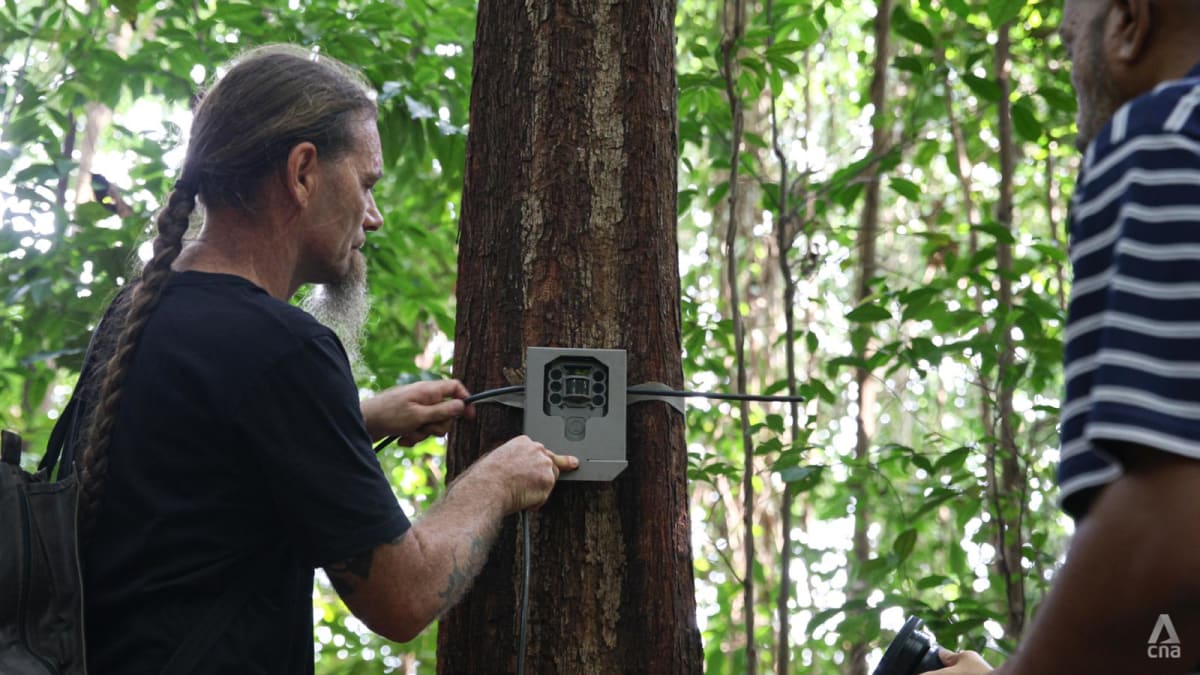
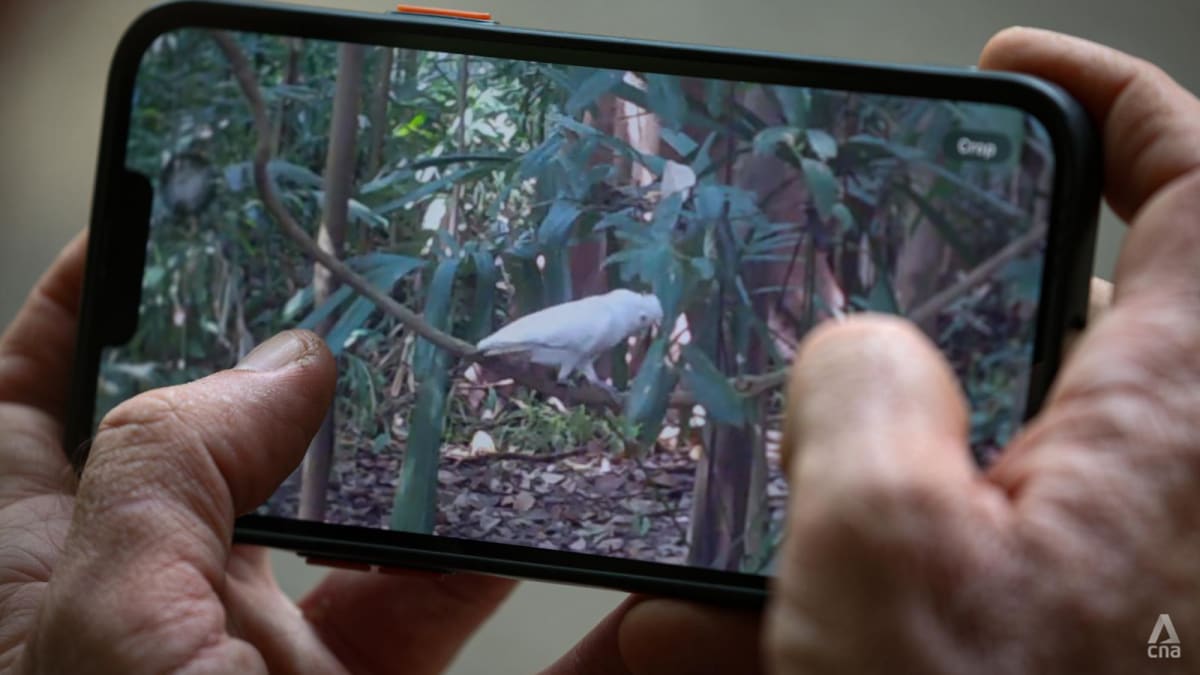
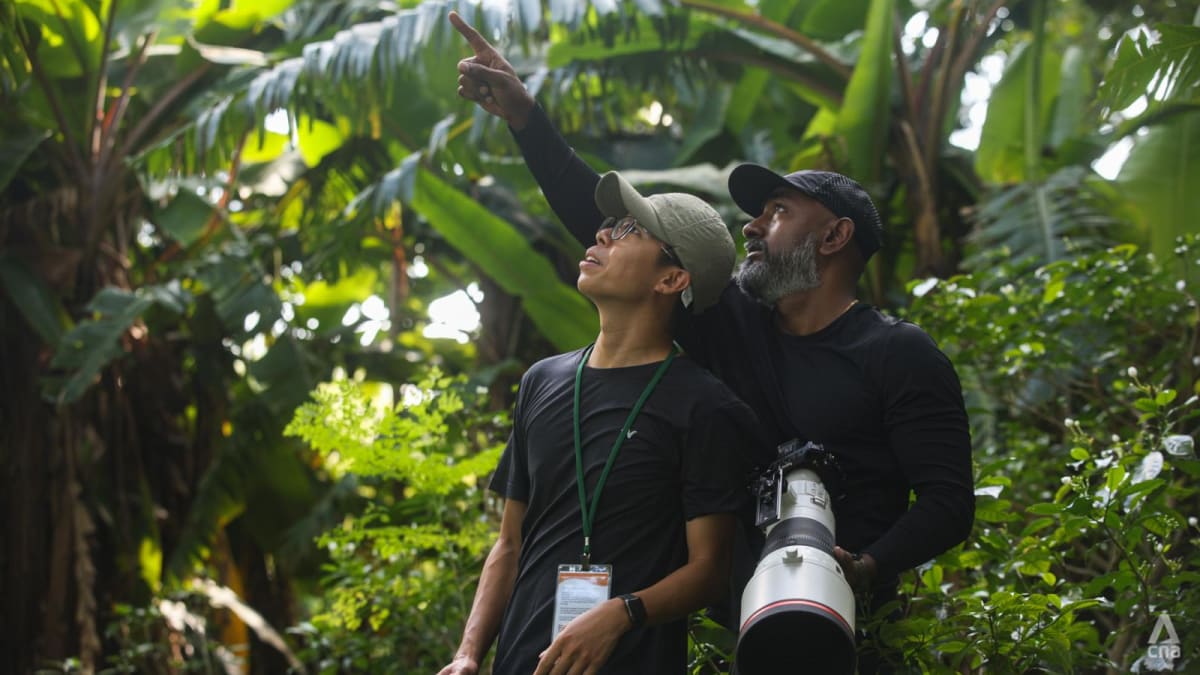
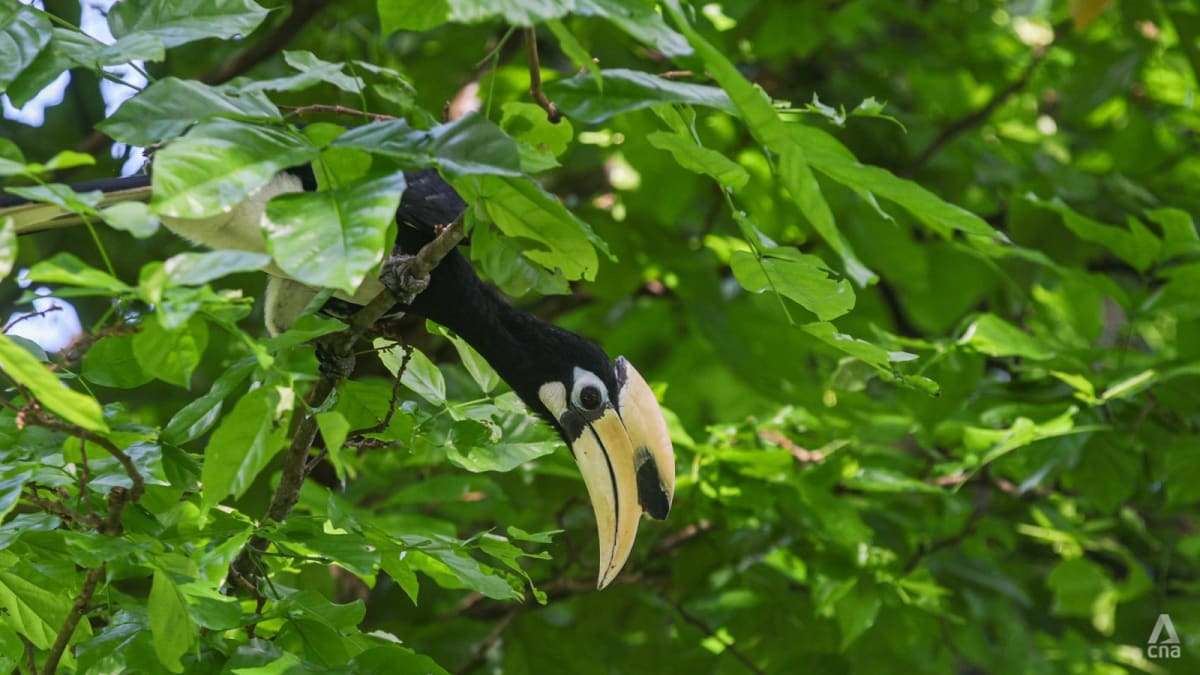
JP, who is the 2017 National Geographic Nature Photographer of the Year, said: “The excitement of not knowing what you’re going to get is amazing. I know I’m going to get something but I don’t know what.”
The seasoned nature photographer of 20 years said that there is “nothing in your control” when it comes to capturing wildlife.
For instance, an extra low tide on the north-western tip of Sentosa accompanied a supermoon in August, making it a rare occasion and perfect opportunity to capture intertidal marine life.
